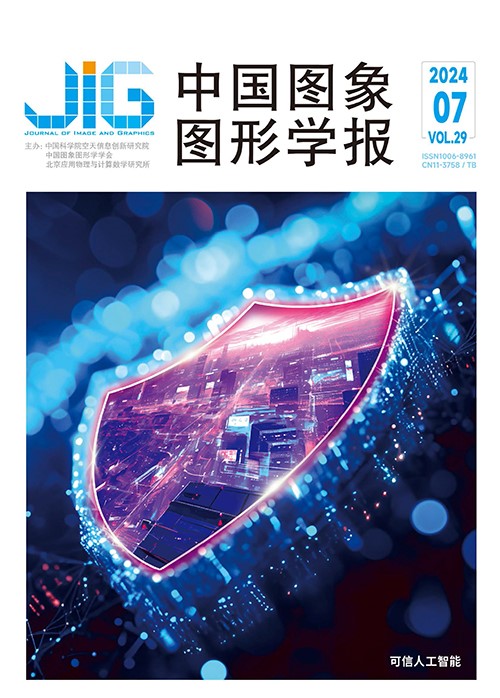
面向图像识别的公平性研究进展
摘 要
在过去的几十年里,图像识别技术经历了迅速发展,并深刻地改变着人类社会的进程。发展图像识别技术的目的是通过减少人力劳动和增加便利来造福人类。然而,最近的研究和应用表明,图像识别系统可能会表现出偏见甚至歧视行为,从而对个人和社会产生潜在的负面影响。因此,图像识别的公平性研究受到广泛关注,避免图像识别系统可能给人们带来的偏见与歧视,才能使人完全信任该项技术并与之和谐相处。本文对图像识别的公平性研究进行了全面的梳理回顾。首先,简要介绍了偏见3个方面的来源,即数据不平衡、属性间的虚假关联和群体差异性;其次,对于常用的数据集和评价指标进行汇总;然后,将现有的去偏见算法划分为重加权(重采样)、图像增强、特征增强、特征解耦、度量学习、模型自适应和后处理7类,并分别对各类方法进行介绍,阐述了各方法的优缺点;最后,对该领域的未来研究方向和机遇挑战进行了总结和展望。整体而言,学术界对图像识别公平性的研究已经取得了较大的进展,然而该领域仍处于发展初期,数据集和评价指标仍有待完善,针对未知偏见的公平性算法有待研究,准确率和公平性的权衡困境有待突破,针对细分任务的独特发展趋势开始呈现,视频数据的去偏见算法逐渐受到关注。
关键词
Review on fairness in image recognition
Wang Mei1, Deng Weihong2, Su Sen2(1.School of Artificial Intelligence, Beijing Normal University, Beijing 100875, China;2.School of Artificial Intelligence, Beijing University of Posts and Telecommunications, Beijing 100876, China) Abstract
In the past few decades, image recognition technology has undergone rapid developments and has been integrated into people’s lives, profoundly changing the course of human society. However, recent studies and applications indicate that image recognition systems would show human-like discriminatory bias or make unfair decisions toward certain groups or populations, even reducing the quality of their performances in historically underserved populations. Consequently, the need to guarantee fairness for image recognition systems and prevent discriminatory decisions to allow people to fully trust and live in harmony has been increasing. This paper presents a comprehensive overview of the cutting-edge research progress toward fairness in image recognition. First, fairness is defined as achieving consistent performances across different groups regardless of peripheral attributes (e.g., color, background, gender, and race) and the reasons for the emergence of bias are illustrated from three aspects. 1) Data imbalance. In existing datasets, some groups are overrepresented and others are underrepresented. Deep models will facilitate optimization for the overrepresented groups to boost the accuracy, while the underrepresented ones are ignored during training. 2) Spurious correlations. Existing methods continuously capture unintended decision rules from spurious correlations between target variables and peripheral attributes, failing to generalize the images with no such correlations. 3) Group discrepancy. A large discrepancy exists between different groups. Performance on some subjects is sacrificed when deep models cannot trade off the specific requirements of various groups. Second, datasets (e.g., Colored Mixed National Institute of Standards and Technology database (MNIST), Corrupted Canadian Institute for Advanced Research-10 database (CIFAR-10), CelebFaces attributes database (CelebA), biased action recognition (BAR), and racial faces in the wild (RFW)) and evaluation metrics (e.g., equal opportunity and equal odds) used for fairness in image recognition are also introduced. These datasets enable researchers to study the bias of image recognition models in terms of color, background, image quality, gender, race, and age. Third, the debiased methods designed for image recognition are divided into seven categories. 1) Sample reweighting (or resampling). This method simultaneously assigns larger weights (increases the sampling frequency) to the minority groups and smaller weights (decreases the sampling frequency) to the majority ones to help the model focus on the minority groups and reduce the performance difference across groups. 2) Image augmentation. Generative adversarial networks (GANs) are introduced into debiased methods to translate the images of overrepresented groups to those of underrepresented groups. This method modifies the bias attributes of overrepresented samples while maintaining their target attributes. Therefore, additional samples are generated for underrepresented groups, and the problem of data imbalance is addressed. 3) Feature augmentation. Image augmentation suffers from model collapse in the training process of GANs; thus, some works augment samples on the feature level. This augmentation encourages the recognition model to produce consistent predictions for the samples before and after perturbing and editing the bias information of features, making it impossible for the model to predict target attributes based on bias information and thus improving model fairness. 4) Feature disentanglement. This method is one of the most commonly used for debiasing, which removes the spurious correlation between target and bias attributes in the feature space and learns target features that are independent of bias. 5) Metric learning. This method utilizes the power of metric learning (e.g., contrastive learning) to encourage the model to make predictions based on target attributes rather than bias information to promote pulling the same target class with different bias class samples close and pushing the different target classes with similar bias class samples away in the feature space. 6) Model adaptation. Some works adaptively change the network depth or hyperparameters for different groups according to their specific requirements to address group discrepancy, which improves the performance on underrepresented groups. 7) Post-processing. This method assumes black-box access to a biased model and aims to modify the final predictions outputted by the model to mitigate bias. The advantages and limitations of these methods are also discussed. Competitive performances and experimental comparisons in widely used benchmarks are summarized. Finally, the following future directions in this field are reviewed and summarized. 1) In existing datasets, bias attributes are limited to color, background, image quality, race, age, and gender. Diverse datasets must be constructed to study highly complex biases in the real world. 2) Most of the recent studies dealing with bias mitigation require annotations of the bias source. However, annotations require expensive labor, and multiple biases may occasionally coexist. Mitigation of multiple unknown biases must still be fully explored. 3) A tradeoff dilemma exists between fairness and algorithm performance. Simultaneously reducing the effect of bias without hampering the overall model performance is challenging. 4) Causal intervention is introduced into object classification to mitigate bias, while individual fairness is proposed to encourage models to provide the same predictions to similar individuals in face recognition. 5) Fairness on video data has also recently attracted attention.
Keywords
|



 中国图象图形学报 │ 京ICP备05080539号-4 │ 本系统由
中国图象图形学报 │ 京ICP备05080539号-4 │ 本系统由